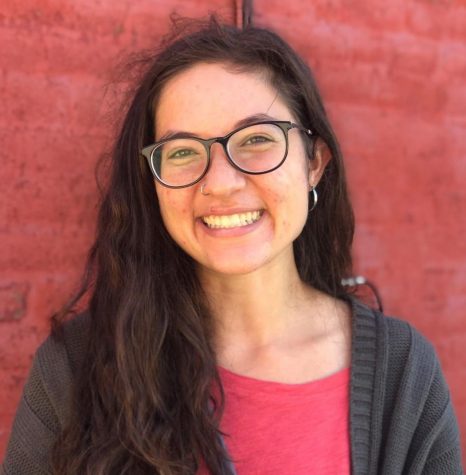Opinion | Know violence in vocabulary
Mexican author Valeria Luiselli at Hay Festival 2016.
March 19, 2019
In Mexico City, Valeria Luiselli is a name most households know and love. In the United States, the author is lesser known, though that’s begun to change since the publication of her latest novel, “Lost Children Archive,” in early February.
Luiselli, a Mexico City native who now resides in New York City, spoke at the Pittsburgh Arts & Lectures “Ten Evenings” series on March 11. Her writings largely recount the experiences she has had working in court as a translator and her political rage. In some of her most recent works, she emphasizes how the United States gives unaccompanied minors who cross the border only 21 days to find a lawyer to take their case pro bono before they are deported back to their country of origin. The message of her lecture was for Americans to become conscious of the violence in their own vocabulary that can contribute to how these children are viewed.
Luiselli’s reasoning comes from her time in the summer of 2014 working as a volunteer Spanish-to-English interpreter in a court for child refugees from Latin America detained crossing the border. Using the makeshift questionnaire the volunteers made to help the children build a court case, she wrote the piece she is best known for in the United States, “Tell Me How It Ends: An Essay in Forty Questions.” She moves through questions such as “Why did you flee your home?” and “Did anyone hurt you on the way here?”
“We have to learn to denounce the violence in language,” she said during her lecture in Oakland last week. “We must understand that immigration is not a crisis, but rather a geographical reality.”
She is right — immigration is a human movement that has been part of the world’s past and present and will be part of the future. You learned about it in middle school, likely on an overhead projector or in a flimsy science textbook. Perhaps it was called “migration” then.
“In modern history, major demographic transitions have included the influx of immigrants to the U.S. from the mid-1800s to the early 20th century; the flow of humanity at the end of World War II, when tens of millions of people, particularly in Europe, were sundered from their native countries by years of violent conflict; and the movement of more than 17 million Africans within their continent in the 21st century,” wrote University of Pennsylvania faculty member Abigail Meisel.
One of the major factors pushing migration today is violence and unrest in Central America. In “Tell Me How It Ends,” Luiselli tells the story of a young man who migrates to the United States from South America to escape the MS-13 gang. He tells her in court that gang members killed his friend and then hid outside of his house. He could not leave for days. She notes this is a common occurrence.
William Lacy Swing, the former director general of the International Organization for Migration, notes both natural and man-made disasters, such as climate change, hurricanes and tsunamis, also force migration. Scientists estimate that climate change alone could cause more than 140 million people to migrate by 2050. Moving around due to conditions is an inevitable phenomenon, not a crisis that can be prevented.
While it’s important to address immigration as a movement rather than a crisis, Luiselli also stresses the importance of choosing appropriate language to address the refugees themselves.
“Children, adults, they can do illegal things, but nobody can be metaphysically illegal,” she said at the end of her lecture.
Luiselli admitted she, like everyone else, does not have a perfect answer to addressing the influx of refugees. But she believes that looking at them as people, in a more humane way, is the root of the solution.
“Only then can we solve it,” she said before her closing remarks.
Sometimes lectures like Luiselli’s can leave the audience overwhelmed, on top of being empowered. For college students who are taking 15-plus credit hours, working side jobs and upholding their commitment to on-campus extracurriculars, finding a way to help an influx of immigrants can seem not only daunting, but nearly impossible. During the book-signing reception, I asked her what students like myself could do to help.
“You have to start small,” she said. “Change your language, like I said. And get involved with local organizations.”
Casa San Jose, a Pittsburgh-based organization, was tabling at the discussion. The organization’s goal is to help Latin and South American refugees become more acclimated to the Pittsburgh area through connection to other Hispanic students, transportation, interpretation, jobs and overall empowerment. The nonprofit has assisted more than 1,000 Latinos since its founding, according to the website.
While volunteering is a time commitment, being conscious of language is not. Immigration is a reality that does need a solution. Luiselli does not argue otherwise. But the solution needs to be to see the refugees as human beings, not intruders. When we speak, others pick up on what we say. We do not need to be policy-makers or border interpreters to make a difference.









